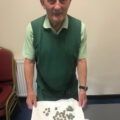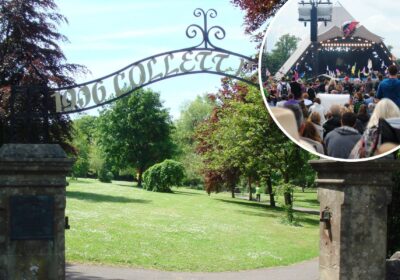Watercress is one of today’s superfoods, packed full of vitamins A and C, as well as potassium and magnesium…
by Katrina ffiske.
Chalke Valley Watercress, in the middle of the village of Broadchalke, is one of England’s smallest, family-run watercress farms. Manager Keith Hitchings is the fifth generation of the family and his son Harry the sixth generation to run the farm.
They grow traditional dark-green watercress on a natural spring and supply fresh cress daily nationwide to wholesale markets, hotels, restaurants and local shops.
I went to meet Keith to discover how this superfood is grown. The setting is idyllic – a seemingly small area of watercress beds, surrounded by weeping willows, riverbanks and cottages.
“This whole area used to be a marsh,” Keith said. “In 1880 my great-great grandfather chose this site because of the fantastic natural spring water source.
“Rain falling on the hills higher up the valley filters down through the Chalke hills, picking up natural minerals on its way, which is essential for good quality watercress.”
The business flourished during the Victorian era, due to the extension of the railways, and watercress became popular because it was nourishing and cheap. It became known as ‘poor man’s bread’ and was eaten on its own or in sandwiches for those who could not afford meat.
“For many years the bays were separated by soil,” Keith added. “But by 1979, my father, Geoffrey, soon realised that insects and small animals such as voles were getting into the watercress.
“He made many improvements, including completing the beds as we see them today, built to pass the NFU watercress code of practice. Harry and I continue yearly to make improvements.
“We grow our own variety of watercress taking our own seed annually. Chalke Valley Watercress also stands out from other cress because it is darker and has a larger leaf. It is popular with chefs because it has a good shelf life with a strong peppery taste.”

The watercress harvesting machine makes light work of what used to be back-breaking labour, in among the modernised beds
Standing in one bed is a small machine that cuts the top of the watercress. “We get multiple crops from each bed,” Keith said. “Before we had the machine the crops were all hand-cut – back breaking work, long hours in sometimes very harsh weather.”
Before leaving I met a team of six who were weighing, packing and boxing up the freshly picked watercress, ready for delivery to Covent Garden in London, where it would arrive at 10pm and be sold overnight before getting to hotels and restaurants by early morning. Harvesting begins anew in February – pop the date in your diary. During the season a fridge full of freshly picked watercress is always available.











Leave a Reply